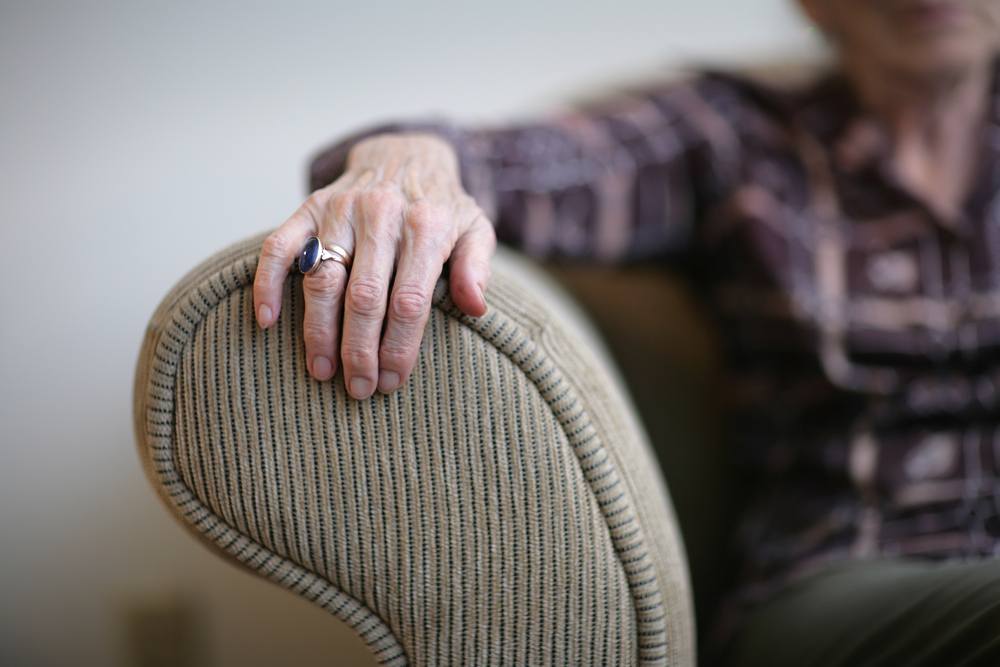The experiences of loneliness in people with mental health difficulties

Like food and water, social interaction is a basic human need (Tomova et al., 2020). However, in England, approximately 3 million people often or always feel alone (Department for Digital, Culture, Media, and Sport, 2021).
Loneliness emerges in the absence of good-quality, meaningful relationships (Peplau, 1982); placing individuals at increased risk of social isolation and negatively impacting their physical and mental health. Increasing the risk of negative outcomes, such as premature mortality (Holt-Lunstad et al., 2015), high blood pressure (Hawkley et al., 2010), coronary heart disease (Valtorta et al., 2016), depression, self-harm, and anxiety (Mann et al., 2022).
The development of loneliness-reducing strategies requires research to explore the loneliness-mental health dynamics (Mann et al., 2022). However, research tends to focus on disorder-specific links and not on how loneliness is experienced by individuals with common mental health difficulties.
The present study, co-designed with experts by experience, aims to explore how adults experiencing mental health problems conceptualised, experienced, and addressed their feelings of loneliness during the COVID-19 pandemic. The authors present their generic research findings in this paper, whilst findings specifically relevant to the pandemic have been written up separately (Gillard et al., 2021; Vera San Juan et al., 2021; Shah et al., 2022).

Research on loneliness focuses mostly on disorder-specific experiences.
Methods
Sample
Participants were recruited from community organisations, charities, and social media platforms. Eligible individuals were individuals over 18 years old who self-reported experiencing mental health difficulties and loneliness. Purpose sampling aimed to ensure diversity by including individuals of minority groups, users of various mental health services, those with multiple diagnoses, and urban/rural populations.
Design and measures
This qualitative study involved research-trained individuals with lived experience who embedded their expertise at every stage of the research process, such as the design of interview guides, conducting interviews, analysing data and report writing. Data was gathered with semi-structured interviews. Due to the emergence of the Covid-19 pandemic, two interviews were conducted face-to-face, eight over the phone, and the remaining 49 online.
Analysis
The data was thematically analysed (Braun and Clarke, 2019) using Template Analysis (King and Brooks, 2017). Transcripts were closely examined and compared amongst researchers and lived experience researchers to ensure the identification of relevant themes. Out of the fifty-nine interview transcripts, only three preliminary and five confirmatory transcripts were analysed to develop the study’s coding template.
Results
The authors interviewed and described the experiences of 59 adult participants living in the UK, who had self-reported experiencing mental health problems. These included mood disorders (44%), personality disorders (12%), bipolar disorder (13.5%), and schizophrenia (12%), as well as addiction, obsessive-compulsive disorder, and suicidal thoughts (10%) and other non-specified diagnoses (18.5%). Overall, the sample was predominantly white British heterosexual females, aged 25-54 and living in urban areas.
In total, the study found four over-arching themes that capture how individuals with mental health problems experience loneliness emotionally and physically. Overall, participants revealed that their mental health difficulties led them to feel lonely, whilst feeling lonely worsened their mental health. However, for some participants, this relationship was one-way, whilst, for others, it was dynamic in nature.
1. What the word “lonely” meant to participants
Participants shared that loneliness is experienced emotionally with feelings of “tearfulness” or “sadness”, and physically with sensations such as “stabbing in the heart”. Loneliness experiences varied according to the time spent interacting with others, and the quality of social interactions, i.e., if they felt understood, loved, and supported and a sense of belongingness.
2. Connections between loneliness and mental health
Participants described how their loneliness and mental health were closely intertwined: “it’s a bit of a cycle. . . your mental health means you can’t connect to people, then not being able to connect makes your mental health worse and then you’re just cycling around.”
Participants also revealed how having a long-term mental health condition contributed to the deterioration of their social relations. Moreover, people reflected that poverty, stigma, and condition-specific symptoms increase self-isolation, social exclusion, and therefore, loneliness: “Because of my condition [‘borderline personality disorder’], I worry about having relationships with people and that keeps me isolated and keeps me lonely.” Similarly, negative thoughts and low mood isolated participants, exacerbating their existing mental health difficulties: “Loneliness can trigger depression in me, it can take me to a dark place”.
3. Factors contributing to ongoing loneliness
Factors contributing to feeling lonely included those relating to self, such as lack of confidence and introversion, and trauma-induced responses, as evidenced by participants: “Sometimes I feel comfortable… to join in the conversation but other times I feel like … they don’t want me there.”
Similarly, physical disabilities and age were identified as barriers to social interactions. However, external factors, such as romantic, emotional, or physical losses, spending excessive time alone, or times of transition, were also identified as barriers: “I have faced grieving for someone that died close to me. I despaired and just be at home alone and just not able to function. . .”
4. Ways to reduce loneliness
Participants were aware of their feelings of loneliness and how such experiences negatively affected them. Applying internal and external approaches to reduce their loneliness proved helpful, depending on the nature and context of their experiences. Internally, participants aimed to improve their mood and reduce anxiety. Externally, participants shared how social contact is critical to reducing feelings of loneliness and how this could be achieved through volunteering, or community-based initiatives, that fostered a sense of group belonging.

Experiences of loneliness reflect the presence and quality of their everyday social interactions and how individuals consider themselves in relation to others.
Conclusions
The authors concluded that loneliness emerges in the absence of quality and meaningful social interactions and the lack of belonging to a group or community. Universal drivers such as transitions were identified, in addition to direct links between experiencing mental health difficulties and feeling lonely. Including mental health symptoms, and the need to withdraw as symptom-related coping mechanisms and stigma. Considering such contributors to loneliness, the authors proposed loneliness-reducing strategies.

To tackle loneliness we need a psychologically informed holistic approach, rooted in co-production, and embedded within the community.
Strengths and limitations
The main strength of the study is the embedded lived experience at every stage of the research process, providing rich and reliable accounts of loneliness. The analysis was rigorously performed by lived experienced researchers and experienced qualitative researchers in an iterative process. However, only eight broad-brush transcript analyses guided the initial coding template. Therefore, it is not possible to determine if new themes or insights were not captured.
The authors also ensured a relatively diverse sample of people with various mental health difficulties, backgrounds, service experiences, and locations. However, such heterogeneity can also be seen as a limitation, as groups were not categorically defined to allow between-group comparisons. For example, out of the 44% of participants experiencing mood disorders, it has not been specified how many experienced depression compared to other diagnoses. Although the results offer some conclusions about people with mental health problems, these cannot be linked to particular diagnoses or clinical sub-populations. Lastly, more focus on male participants could have been sought, considering it is a vulnerable and highly under-researched group. Likewise, from a social perspective, it would have been helpful to observe if group memberships, such as participants belonging to the LGBTQ+ community (15.3%) experienced loneliness differently from their heterosexual counterparts (72.9%).
Other limitations of the study include, as acknowledged by the authors, failing to measure participants’ mental health difficulties at baseline. There is no means to draw on the evidence of whether the severity of mental health difficulties affects how an individual experiences loneliness. Moreover, most participants were specialist mental health service users, and 13 had not used any mental health services. Hence, it is difficult to understand if loneliness varies amongst individuals receiving some sort of intervention or treatment compared to those that do not receive any mental health support.
Concluding, the authors reported that participants were encouraged to share general experiences of loneliness and reported COVID-19-related findings elsewhere. However, it cannot be denied that data collection was mostly conducted during the pandemic, which would inevitably impact participants’ mental health states and experiences of loneliness.

Reporting Covid-19 related data separately does not withdraw participants from their existing pandemic context.
Implications for practice
These findings can inform clinicians’ approaches to tackling loneliness when supporting individuals experiencing mental health problems. Loneliness-reducing strategies need an holistic approach to be effective. These can include a combination of supported self-help, peer support, and psychological or social interventions. It’s important for clinicians to be aware of community and support groups or organisations that can offer additional support (alongside public mental health care) and signpost their service users as/when suitable.
The findings have research implications for both qualitative and quantitative exploration. Firstly, the study has emphasised that developing effective interventions requires the inclusion and expertise of individuals with lived experience, so there is ground for co-production and participatory action projects. Furthermore, it would be helpful to investigate how the identified contributing factors relate to loneliness through longitudinal studies. Likewise, exploring qualitatively how marginalised populations, such as the LGBTQ+ community or disabled individuals, experience loneliness could greatly guide community support initiatives and tailored strategies within mental health services.

Qualitative exploration of loneliness among marginalised groups would support the development of tailored strategies.
Statement of interests
None.
Links
Primary paper
Birken, M., Chipp, B., Shah, P., Olive, R. R, Nyikavaranda, P., Hardy, J., Chhapia, A., Barber, N., Lee, S., Pearce, E., Lloyd-Evans, B., Perkins, R., McDaid, D., Stefanidou, T., Shafran, R., Pitman, A., and Johnson, S. (2023). Exploring the experiences of loneliness in adults with mental health problems: A participatory qualitative interview study in PLoS ONE, 18, (3).
Other references
Braun, V., and Clark, V. (2009). Reflecting on reflexive thematic analysis in Qualitative Research in Sport, Exercise and Health, 11, (4), 589–597.
Department for digital, culture, media, and sport. (2021). Wellbeing and Loneliness – Community Life Survey 2020/21, in Official Statistics.
Dengu, D. Improving our understanding of the links between loneliness and mental health problems. The Mental Elf, 24 Jan 2023.
Gillard, S., Dare, C., Hardy, J., Nyikavaranda, P., Rowan Olive, R., Shah, P., Birken, M., Foye, U., Ocloo, J., Pearce, E., Stefanidou, T., Pitman, A., Simpson, A., Johnson, S., Lloyd-Evans, B., and NIHR Mental Health Policy Research Unit Covid coproduction research group (2021). Experiences of living with mental health problems during the COVID-19 pandemic in the UK: a coproduced, participatory qualitative interview study in Social psychiatry and psychiatric epidemiology, 56(8), 1447–1457.
Hawkley, L. C., Thisted, R. A., Masi, C. M., and Cacioppo, J. T. (2010). Loneliness predicts increased blood pressure: 5-year cross-lagged analyses in middle-aged and older adults in Psychology and Aging, 25, ( 1), 132.
Hawkley, T. J., and Cacioppo, C. L. (2009) Perceived social isolation and cognition in Trends Cognitive Science, 13, (10), 447-54.
Holt-Lunstad, J., Smith, T. B., Baker, M., Harris, T., and Stephenson, D. (2015). Loneliness and Social Isolation as Risk Factors for Mortality: A Meta-Analytic Review in Perspectives on Psychological Science, 10, ( 2), 227-237.
King, N., and J. M. Brooks. 2017. Template Analysis for Business and Management Students. London: Sage.
Mann, F., Wang, J., Pearce, E., Ma, R., Schlief, M., Lloyd-Evans, B., Ikhtabi, S., and Johnson, S. (2022). Loneliness and the onset of new mental health problems in the general population in Social psychiatry and psychiatric epidemiology, 57, ( 11), 2161–2178.
Mansfield, R. Dementia, and loneliness: prevalence and determinants for people living in the UK. The Mental Elf, 29 Jan 2021.
Peplau, L. (1982). Perspective on loneliness in Loneliness: a sourcebook of current theory, research, and therapy. John Wiley and Sons.
Shah, P., Hardy, J., Birken, M., Foye, U., Rowan Olive, R., Nyikavaranda, P., Dare, C., Stefanidou, T., Schlief, M., Pearce, E., Lyons, N., Machin, K., Jeynes, T., Chipp, B., Chhapia, A., Barber, N., Gillard, S., Pitman, A., Simpson, A., Johnson, S., Lloyd-Evans, B., and the NIHR Mental Health Policy Research Unit Covid coproduction research group (2022). What has changed in the experiences of people with mental health problems during the COVID-19 pandemic: a coproduced, qualitative interview study in Social psychiatry and psychiatric epidemiology, 57(6), 1291–1303.
Tomova, L., Wang, K. L., Thompson, T., Matthews, A. G., Takahashi, A., Tye, M. K., and Saxe, R. (2020). Acute social isolation evokes midbrain craving responses similar to hunger in Nature Neuroscience, 23, 1597–1605.
Valtorta, N., Kanaan, M., Gilbody, S., Ronzi, S., and Hanratty, B. (2016). Loneliness and social isolation as risk factors for coronary heart disease and stroke: systematic review and meta-analysis of longitudinal observational studies in Heart, 102, 1009–1016.
Vera San Juan, N., Shah, P., Schlief, M., Appleton, R., Nyikavaranda, P., Birken, M., Foye, U., Lloyd-Evans, B., Morant, N., Needle, J. J., Simpson, A., Lyons, N., Rains, L. S., Dedat, Z., and Johnson, S. (2021). Service user experiences and views regarding elemental health during the COVID-19 pandemic: A co-produced framework analysis in PloS one, 16(9), e0257270.
Wang, J. Loneliness in psychosis and related psychological and social factors. The Mental Elf, 4 Sep 2018.
Photo credits
Source link
#experiences #loneliness #people #mental #health #difficulties

